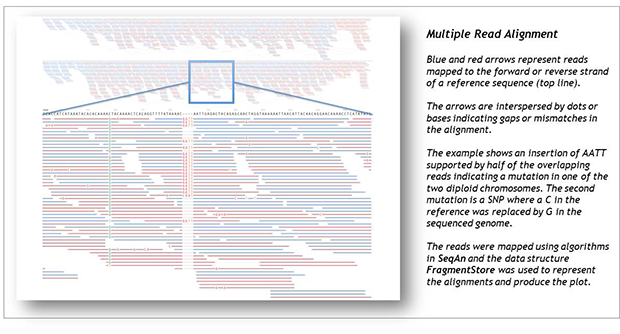 CUDA Spotlight: Knut Reinert By Calisa Cole, posted Sept. 25, 2013 GPU-Accelerated GenomicsThis week's Spotlight is on Dr. Knut Reinert. Knut is a professor at Freie Universität in Berlin, Germany, as well as chair of the Algorithms in Bioinformatics group in the Institute of Computer Science. Knut and his team focus on the development of novel algorithms and data structures for problems in the analysis of biomedical mass data. In particular, the group develops mathematical models for analyzing large genomic sequences and data derived from mass spectrometry experiments (for example, for detecting differential expression of proteins between normal and diseased samples). Previously, Knut was at Celera Genomics, where he worked on bioinformatics algorithms and software for the Human Genome Project, which assembled the very first human genome. This interview is part of the CUDA Spotlight Series. [Ed. note: On Oct. 22, 2013, Knut will deliver a webinar presentation titled: Intro to SeqAn, an Open-Source C++ Template Library] Q & A with Knut ReinertNVIDIA: Knut, what is your role at Freie Universität Berlin? NVIDIA: Tell us about the SeqAn library.
NVIDIA: Describe the hardware/software platform currently in use by your lab. NVIDIA: What types of parallel algorithms are being implemented? NVIDIA: What approaches have been useful for CUDA development?
NVIDIA: Were any specific GPU-accelerated libraries utilized? NVIDIA: If you had more computing power, what could you do? NVIDIA: What are the biggest challenges going forward? NVIDIA: What are you most excited about, in terms of advancements over the next decade? NVIDIA: How did you become interested in this field? Bio for Dr. Knut ReinertKnut Reinert received his PhD after training as an algorithmicist at the Max-Planck-Institute for Computer Science in Saarbrücken, Germany. Following this he joined Celera Genomics as a senior scientist. At Celera he worked in the group of Professor Gene Myers and participated in the assembly efforts for the genomes of Drosophila Melanogaster and human (see The Human Genome Project). Since 2002, Knut Reinert has been a full professor at Freie Universität Berlin. During this time he served as Dean of the Computer Science and Math Department (2008-2010). He is also the vice-speaker of the International Max-Planck Research School for Computational Biology and Scientific Computing and the head of the Bioinformatics Joint Commission between the Department of Mathematics and Computer Science, the Department of Biology, Chemistry and Pharmacy, and the Charité Medical School.
Relevant Links Contact Info |

